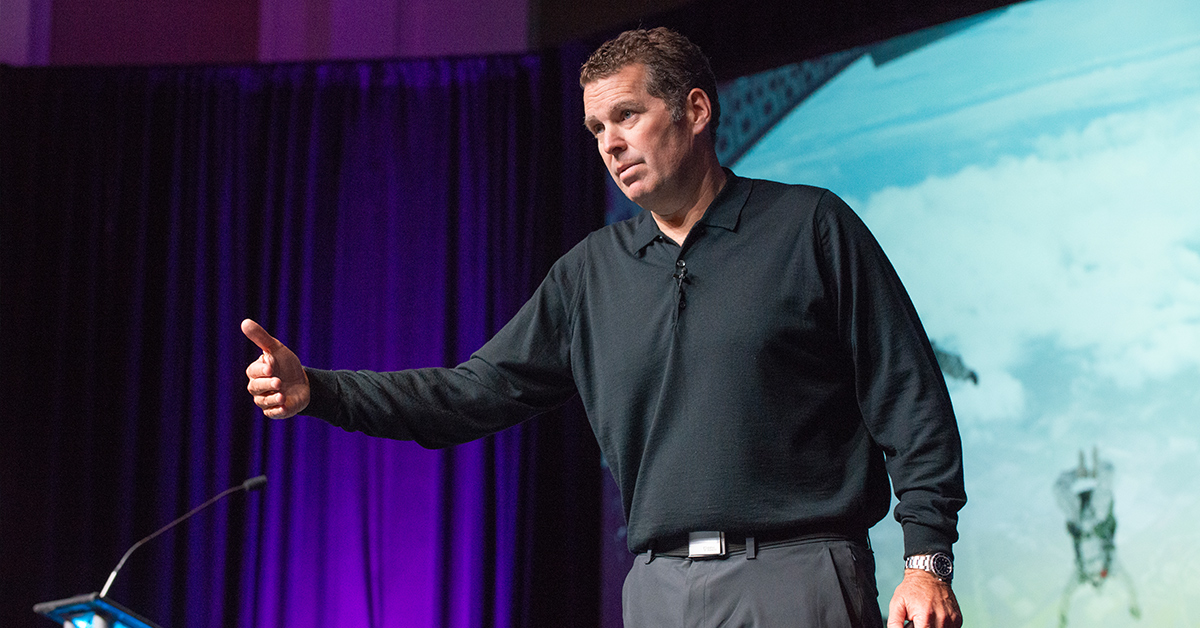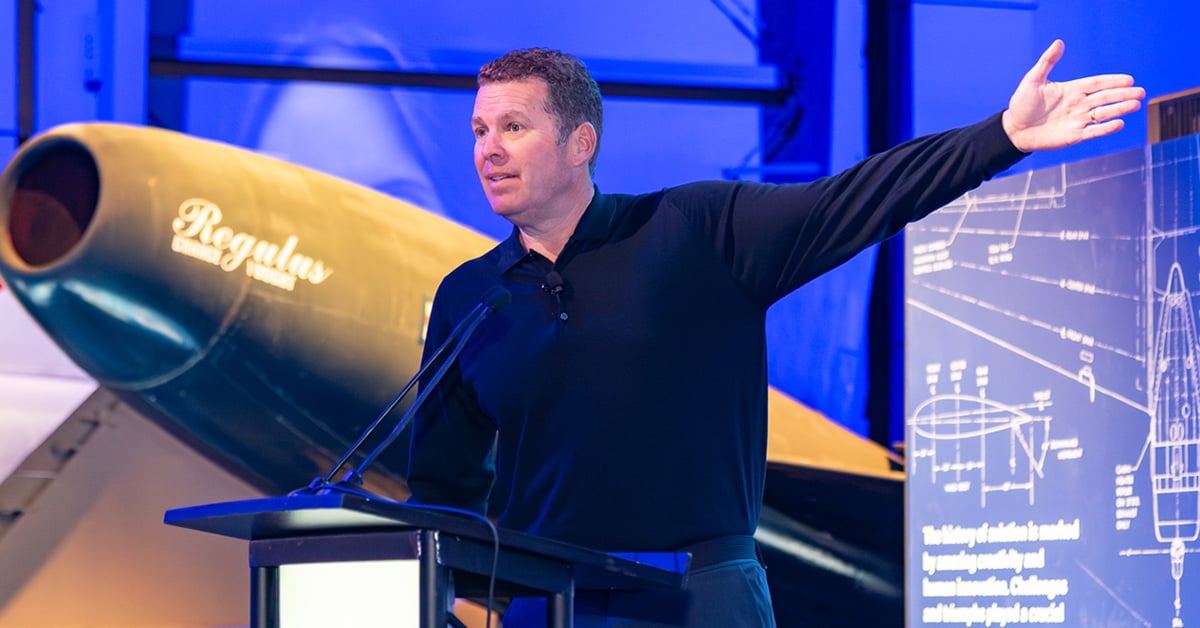Leadership training programs teach professionals at both large and small organizations the powerful tools and habits to transform individuals into teams and shape organizational cultures. For individuals, leadership speakers and training programs focus on leading yourself to embrace change, overcome obstacles, and find success regardless of the situation or environment. For teams, leadership training programs focus on leading others to work better together, innovate, and accomplish more than they set out to achieve. For organizations, leadership training programs focus on leading organizations to a culture of happiness, continual improvement, and perpetual high performance. In this post, let’s dive in to explore the top ten benefits of leadership training programs in greater detail.
Embrace Change
One of the top ten benefits of leadership training programs is to cultivate flexibility and the ability to adjust one’s mindset and behaviors as conditions change. This benefit refers to an openness to new perspectives and the adaptability to let go of one idea or belief to embrace another. When people become set in their ways, they become blind to other opportunities. When they embrace change, they become learning machines with a curiosity to learn new skills and develop mastery of new subjects. The skills I’m referring to are a person’s willingness, capacity, and curiosity to learn new concepts and apply them to the right circumstances.
Overcome Obstacles
Another benefit of leadership training programs is helping people develop perspective and apply lessons learned to solve current problems. Perspective also comes from experience—how a person thinks and has responded to past challenges and obstacles. This benefit reflects a thoughtfulness about the way past experiences and challenges have shaped their attitudes, beliefs, and behavior. We cannot always control external events and people, but we can adjust our thinking about them, choose how we respond, and change the consequences. Not only can we neutralize the effects of distorted beliefs and thoughts, we can learn how to change course and practice new behaviors and actions that help us move forward.
Goal Setting & Planning
Effective goal setting and planning starts with creating a vision of what is the goal, understanding the why behind the goal, and planning how to track and achieve the goal. The best leaders and coaches have learned to seek time and space for themselves and their teammates to refocus their attention, dream about those “what if” possibilities, and visualize an outcome where we marshal the best from those we serve. Effective planning translates visions and goals into road maps and actions to achieve objectives, considering all the things that can go wrong and then coming up with a contingency plan. Some call this “out-of-the-box” thinking, but I call it 3-D planning. Think of it as looking at a plan from every angle, not just where you want to go, but also at the things that could change your course, and plan how to deal with them. Even with all the planning you do, you’ll miss something, and that’s when it gets exciting—you learn something new!
Meet Objectives
At its essence, leadership training programs focus on teaching how to galvanize a group of individuals, bring forth their best talents, and apply their efforts day-after-day toward accomplishing a goal. The goals I am referring to are the goals that you alone cannot achieve—goals that you need others to help you achieve. This is no small task—staying focused on an objective; remaining motivated week-after-week while wondering if the goal is even attainable; and dealing with multiple egos, habits, behaviors, and attitudes—to name just a few leadership challenges. Yes, leading is hard, and it’s even harder if you don’t know where you’re going, why you’re doing it, and how to get there.
Team Building
There would be no reason for learning leadership skills if we all possessed the ability to do everything we needed or wanted to do ourselves. Leadership training is premised on the fact that we need each other’s knowledge, skills, and abilities to get things done. When I speak of getting things done, I’m not talking about rudimentary tasks that an individual can do themselves. I am referring to those transformational missions where you need a team—or better still, teams of teams—to accomplish the goal. A part of leadership training includes learning to embrace the fact that you are part of an ecosystem that will help you succeed if you help it/them succeed! If you maintain a lone-soldier mindset, you might find some short-term success, but the long-term journey will be riddled with “almost made it” achievements, which will wear you down over time. Then you’ll find the dreaded “woulda-coulda-shoulda” phrases sneaking into your vocabulary.
Innovate
As you solve each problem that surfaces in your business or personal life, take the time to ask, “Is there a better way to do this?” Great teams and leaders are constantly innovating, improving their systems, and inventing new ways to do things better. Leadership training programs develop people’s ability to innovate by building relationships with their employees in which trust, direction, respect, and empowerment aren’t optional but mandatory. Innovative teams come in all shapes and sizes, but they all depend on understanding human emotions, motivations, and values. It is both complex and as simple as this: you must care. Caring is the cornerstone for building trust and persistence in any group. When people feel cared for and when they care about the tasks and goals at hand, they are willing to step beyond their perceived limits and dare to do something greater than they originally thought possible.
Coaching Coaches
Much of my leadership training today is done through coaching coaches (C-level executives and HR teams), and it is my view that if your team involves humans, then your leadership training programs must focus on relationships where trust, direction, contribution, and ownership are the goals. I have seen enough leadership in my life to know that LEADERS come in all shapes, sizes, genders, and personalities. They can (and are) BUILT—the best ones are built through TRYING (and failing again and again—but still trying), while some of the worst ones think they were born a leader. A main tenet of my coaching philosophy is that leadership doesn’t start when you have people that work for you; it starts with you leading yourself—you are your own first coach. And, by the time you are charged with the responsibility of leading others, you recognize that NO ONE works FOR you, they work WITH you.
Improve Communication
How people communicate is critical to team dynamics and leadership training. The courage, ability and willingness to express ideas and emotions is a key characteristic of teammates who make an impact. You can be the smartest or most creative person on the planet, but if you aren’t able to communicate honestly, humbly, and persuasively, your contributions to the team will be limited. When it comes to building trust, leaders must be able to connect with people—all kinds of people—and empathy is one of the most powerful ways to do it, whether it’s one-to-one or one-to-many. The key to empathy is the ability to listen and stay present in the moment. Leaders listen with the intent first to understand and then respond—not the other way around. They never miss an opportunity to learn something new; they are continually asking themselves when they meet someone “what can I learn from this person?” This question makes them engaging and active listeners—it leaves people feeling like they are the most important person in the room.
Leadership & Development
Your role as a leader, and your measure of fulfilling that role successfully, is building trust, respect, and empowerment toward achieving things together that are far greater than any one individual could accomplish alone. Leading starts with you and your mindset, which sets up how you deal with others. Effective leadership training and development recognizes that every single person wants to have some sense of fulfillment and be a part of something greater than themselves. To enable your teammates to succeed is an act of selflessness. It proves to them that you care more about the team’s success than your own—that you’re “All-In” at serving them so they can better serve the team.
Propelling Continual Success Culture
A high-performance culture is dependent on senior leadership and human resources being educated and empowered to become cultural custodians of their organization. In many organizations, a gap exists between the present culture and the culture needed to drive engagement, competitive advantage, and out-sized growth. The top leadership training programs exist to close the gap between an organization’s existing culture and activate what I call the 10x Advantage to create a culture characterized by continual success. Creating a culture of empowerment can be challenging, because it requires the leader to let go, to relinquish control so that others can step up, make decisions, and take control as well. For those who are insecure, proud, egotistical, or selfish, sharing one’s power is a foreign and terrifying concept. As a leader, one’s role is to grow one’s people to achieve their highest potential.
Learn About Alden’s Transformational Leadership Training Programs
Alden offers three leadership training options: workshops, coaching, and his online academy. Every offering shares the goal of helping learners jump-start their growth as leaders, as colleagues, as team members, and as custodians of their culture. Learn how Alden can best help you, your team, or your organization. Get in touch!





